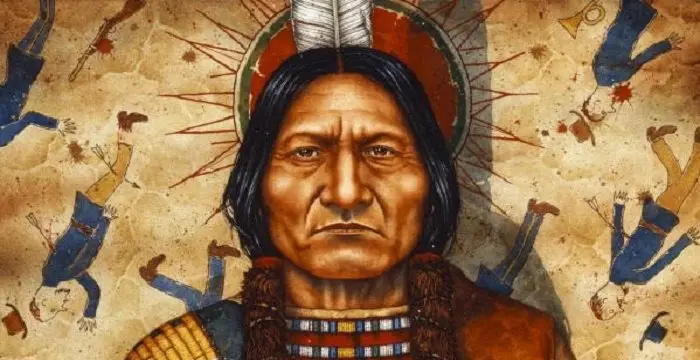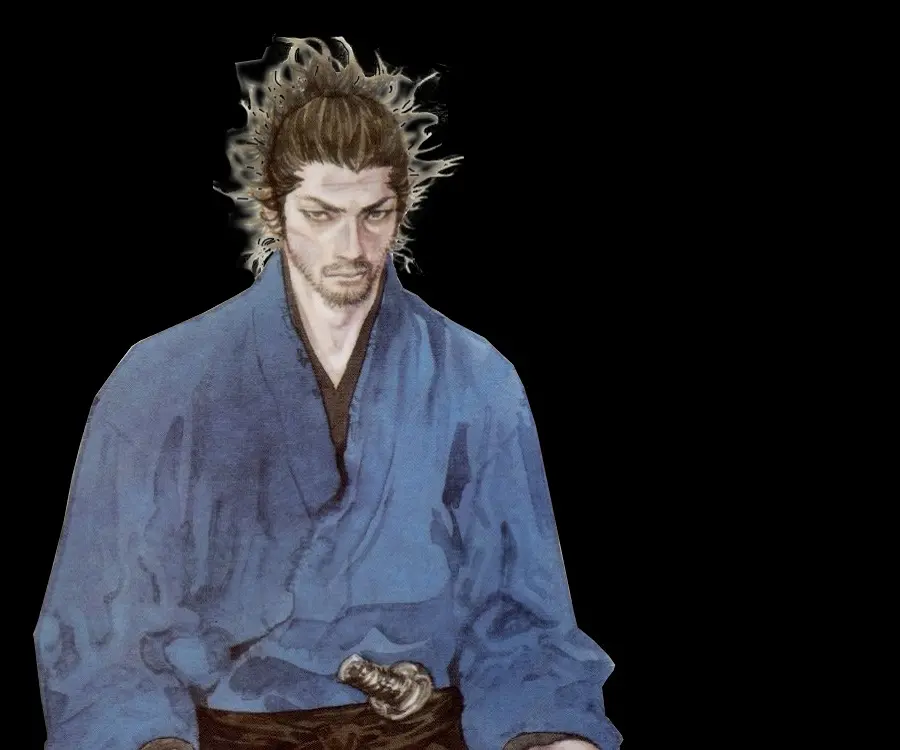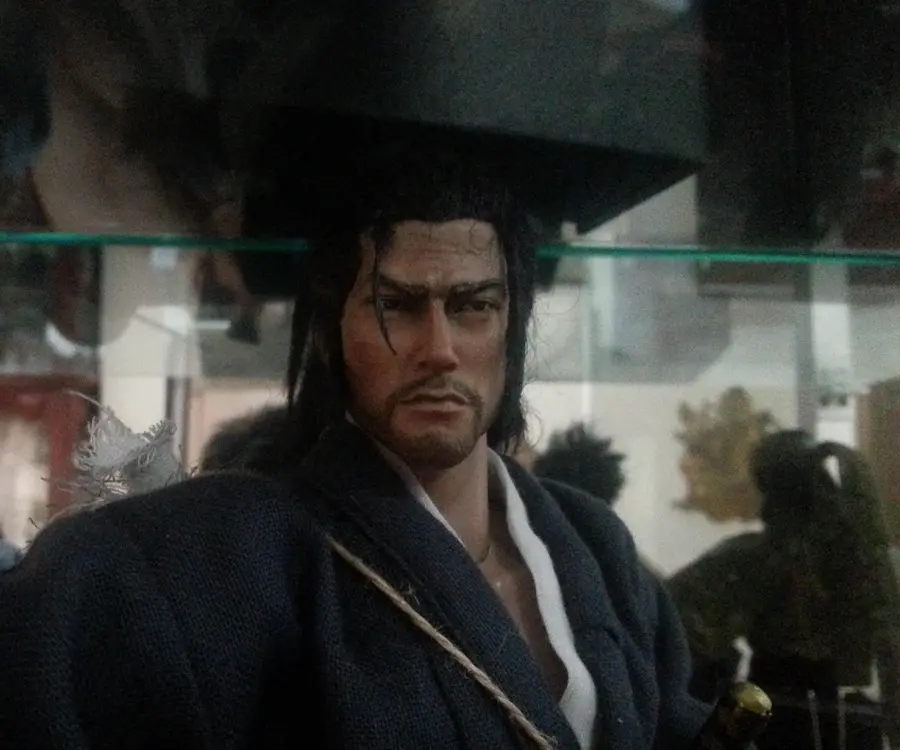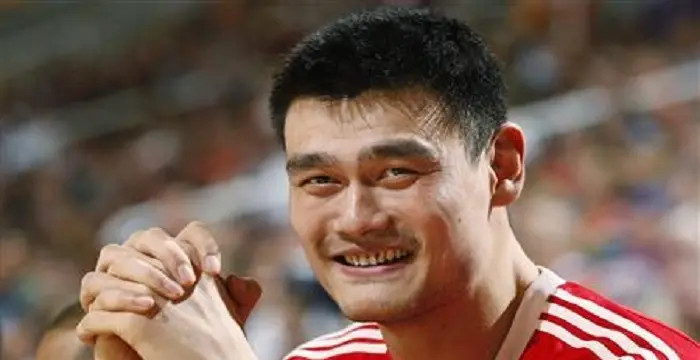
Miyamoto Musashi - Warrior, Career and Personal Life
Miyamoto Musashi's Personal Details
Miyamoto Musashi was a 16th century Japanese samurai, and author of the classic strategy text ‘The Book of Five Rings’.
| Information | Detail |
|---|---|
| Birthday | 1584 |
| Died on | June 13, 1645 |
| Nationality | Japanese |
| Famous | Sportspersons, Martial Artists, ISTP, Swordsman, Warrior |
| Spouses | Omasa, Yoshiko |
| Known as | Shinmen Takezō, Miyamoto Bennosuke, Niten Dōraku |
| Birth Place | Japan |
| Religion | Buddhist |
| Gender | Male |
| Father | Shinmen Munisai |
| Mother | Hirata Shōgen |
| Born in | Japan |
| Famous as | Swordsman & Warrior |
| Died at Age | 61 |
// Famous Warrior
Sitting Bull
Sitting Bull was a Teton Dakota Indian chief who led Sioux tribes in their struggle for survival on the North American Great Plains.
Guru Gobind Singh
Guru Gobind Singh was the last of the ten Sikh Gurus. He introduced the concept of the Five Ks to Sikhism. . This biography of Guru Gobind Singh provides detailed information about his childhood, life, achievements, works & timeline
Miyamoto Musashi's photo
Who is Miyamoto Musashi?
In Japan’s Edo period was born a samurai who went to become the greatest swordsman of the period – he was Miyomoto Musashi. A prodigious child, he trained himself at the art of swordfighting at an early age so much so that at the age of thirteen, he went on to win his first duel. Musashi spent the greater part of his life wandering through the countryside, challenging people to prove his outright capabilities and toughness. Overall, he won sixty duels in his life, some of which was against multiple enemies. He was the founder of the Hyōhō Niten Ichi-ryū or Niten-ryū style of swordsmanship and the author of ‘The Book of Five Rings’, a book on strategy, tactics, and philosophy that is still widely read and referred to today.
Childhood & Early Life
Exact details of Miyamoto Musashi’s birth is not known but it is said that he was born in 1584 in the Miyamoto village in Harima Province to Shinmen Munisai, a martial artist and master of the sword and jutte.
It is speculated that when young Musashi turned seven, he was raised by his uncle Dorinbo, in Shoreian temple. A Buddhist follower himself, Dorindo trained the young lad at Buddhism. He was even taught the basic reading and writing skills
His father gave him training in sword and in the family art of jutte. However, the training was short lived and ended with his father’s relocation to the village of Kawakami. He received his formal education from Yoshioka-ryu dojo school.
Career
His first ever duel was at the age of thirteen against the samurai Arima Kihei, who fought using the Kashima Shinto-ryu style, founded by Tsukahara Bokuden. He successfully challenged the latter with his excellence at swordsmanship.
In 1599, he moved out of his village leaving his family possessions with his sister and brother-in-law. He spent much of his time in engaging himself in duels.
The following year, i.e. in 1600, a war incurred between the Toyotomi and the Tokugawa during which he supported and fought from the Toyotomi side against the Tokugawa. Not much is known of what occurred later on as he disappeared from the side.
He is next reported to have challenged Yoshioka Seijuro, master of the Yoshioka School for a duel. The latter accepted the duel which was to be held outside Rendaiji in Rakuhoku, in the northern part of Kyoto. He won the duel and received the title of ‘Unrivaled Under Heaven’.
From 1605 to 1612, he travelled extensively all over Japan in Musho Shugyo, which was a warrior pilgrimage site. It was during this time that he honed his skills for the duels.
Meanwhile in 1611, he started practicing zazen at the Myoshinji Temple. It was there that he met Nagaoka Sado, vassal to Lord Hosokawa Tadaoki. Takodi in turn was a powerful lord who had received the fief of northern Kyushu after the Battle of Sekigahara.
The following year (1612), he had a duel with Saski Moire, popularly known as ‘The Demon of the Western Provinces’. However, he successfully outstripped the latter as well using a bokkeh that he made from an oar. In this duel as well, he kept his trademark sign of coming in late.
In 1614, he yet again participated in the war between between the Toyotomi and the Tokugawa, but it is unknown which side did he fight for.
In 1615, he served as the foreman or Construction Supervisor for Lord Ogasawara Tadanao of Harima Province. To acquire the position, he first gained the skills required for the post.
During his term as a foreman, he helped lay out the Akashi Castle. He even went on to teach martial arts to students, giving them specialization in the art of shuriken throwing. Around the same time, he adopted a son, Miyamoto Mikinosuke
In 1621, he defeated Miyake Gunbei and three other adepts of the Togun ryu in front of the lord of Himeji. After the resounding success of his duel against Miyake Gunbei, he started planning the town of Hemji.
He then wrote a scroll of Enmei-ryu teachings called ‘Writings on the Sword Technique of the Enmei-ryu for his school, which he had established. The main purpose of the school was to impart training using two swords of the samurai as effectively as a pair of sword and jutte.
In 1622, upon the appointment of his adoptive son as a vassal, he started a new journey moving to Edo in 1623, where he became friends with Confucian scholar Hayashi Razan.
At Edo, he applied for the position of a swordsmaster to Shotgun but was rejected. Upon denial, he moved on to Oshu, where he adopted a second son, Miyamoto Lori, with whom he moved to Osaka.
In 1633, he started staying with Hosokawa Tadatoshi daimyo of Kumamoto Castle, who had moved to the Kumamoto fief and Kokura, to train and paint. The following year, he finally settled in Kokura with Lori, later on serving the daimyo Ogasawara Tadazane.
He played a major role in the Shimabara Rebellion, which began in 1637 by the Christian peasantry on the western island of Kyushu. This was his sixth and last battle where he took on the role of a strategist, directing the troops.
In 1640, he became the retainer of the Hosokowa lords of Kumamoto. The following year, he wrote a work called the ‘Hyoho Sanju Go’ or ‘Thirty-five Instructions on Strategy’ for Hosokawa Tadatoshi. It was this work that later on formed the basis for ‘Go Rin No Sho’.
Personal Life & Legacy
In 1642, he suffered from attacks of neuralgia, which led to a deteriorating health condition. The following year, he retired to the cave called Reigando where he penned the book, ‘The Book of Five Rings’. By 1645, he finished the work.
He died on June 13, 1645 of thoracic cancer. His body was interred in armor within the village of Yuge, near the main road near Mount Iwato, facing the direction the Hosokawas would travel to Edo
Trivia
He is the author of the famous work on Japanese samurai strategy, ‘The Book of Five Rings’.
// Famous Martial Artists
Richard Sandrak
Richard Sandrak, better known as Little Hercules, is a martial artist, bodybuilder and actor. This biography profiles his childhood, family, achievements and some interesting facts.
Shayna Baszler
Shayna Baszler is an American mixed martial artist and professional wrestler. Check out this biography to know about her childhood, family life, achievements and fun facts about her life.
Steven Seagal
Steven Seagal is a famous American actor, director, martial artist and reserve deputy sheriff. This biography profiles his childhood, career, life, achievements and timeline.
Miyamoto Musashi biography timelines
- // 1584Exact details of Miyamoto Musashi’s birth is not known but it is said that he was born in 1584 in the Miyamoto village in Harima Province to Shinmen Munisai, a martial artist and master of the sword and jutte.
- // 1599In 1599, he moved out of his village leaving his family possessions with his sister and brother-in-law. He spent much of his time in engaging himself in duels.
- // 1600The following year, i.e. in 1600, a war incurred between the Toyotomi and the Tokugawa during which he supported and fought from the Toyotomi side against the Tokugawa. Not much is known of what occurred later on as he disappeared from the side.
- // 1605 To 1612From 1605 to 1612, he travelled extensively all over Japan in Musho Shugyo, which was a warrior pilgrimage site. It was during this time that he honed his skills for the duels.
- // 1611Meanwhile in 1611, he started practicing zazen at the Myoshinji Temple. It was there that he met Nagaoka Sado, vassal to Lord Hosokawa Tadaoki. Takodi in turn was a powerful lord who had received the fief of northern Kyushu after the Battle of Sekigahara.
- // 1612The following year (1612), he had a duel with Saski Moire, popularly known as ‘The Demon of the Western Provinces’. However, he successfully outstripped the latter as well using a bokkeh that he made from an oar. In this duel as well, he kept his trademark sign of coming in late.
- // 1614In 1614, he yet again participated in the war between between the Toyotomi and the Tokugawa, but it is unknown which side did he fight for.
- // 1615In 1615, he served as the foreman or Construction Supervisor for Lord Ogasawara Tadanao of Harima Province. To acquire the position, he first gained the skills required for the post.
- // 1621In 1621, he defeated Miyake Gunbei and three other adepts of the Togun ryu in front of the lord of Himeji. After the resounding success of his duel against Miyake Gunbei, he started planning the town of Hemji.
- // 1622 To 1623In 1622, upon the appointment of his adoptive son as a vassal, he started a new journey moving to Edo in 1623, where he became friends with Confucian scholar Hayashi Razan.
- // 1633In 1633, he started staying with Hosokawa Tadatoshi daimyo of Kumamoto Castle, who had moved to the Kumamoto fief and Kokura, to train and paint. The following year, he finally settled in Kokura with Lori, later on serving the daimyo Ogasawara Tadazane.
- // 1637He played a major role in the Shimabara Rebellion, which began in 1637 by the Christian peasantry on the western island of Kyushu. This was his sixth and last battle where he took on the role of a strategist, directing the troops.
- // 1640In 1640, he became the retainer of the Hosokowa lords of Kumamoto. The following year, he wrote a work called the ‘Hyoho Sanju Go’ or ‘Thirty-five Instructions on Strategy’ for Hosokawa Tadatoshi. It was this work that later on formed the basis for ‘Go Rin No Sho’.
- // 1642 To 1645In 1642, he suffered from attacks of neuralgia, which led to a deteriorating health condition. The following year, he retired to the cave called Reigando where he penned the book, ‘The Book of Five Rings’. By 1645, he finished the work.
- // 13th Jun 1645He died on June 13, 1645 of thoracic cancer. His body was interred in armor within the village of Yuge, near the main road near Mount Iwato, facing the direction the Hosokawas would travel to Edo
// Famous Sportspersons
Ted Williams
Ted Williams was an American baseball player. Read this biography to learn more about his profile, childhood, life and timeline.
Jürgen Klopp
Jürgen Klopp is a German football manager, and a former professional football player. Check out this biography to know more about his childhood, family, personal life, etc.
Yao Ming
Yao Ming is a retired Chinese basketball player who played for Chinese Basketball Association (CBA). Check out this biography to know about his childhood, family life, achievements and fun facts about him.
Brock Lesnar
Brock Edward Lesnar is a popular American wrestler, American football player, as well as a martial artist. Check out this biography to know about his childhood, family life, achievements and other facts about his life.
Brandon Burlsworth
Brandon Burlsworth was a football player who played for the Arkansas Razorbacks. Check out this biography to know about his childhood, family life, achievements and fun facts about him.
Whitney Bjerken
Check out all that you wanted to know about Whitney Bjerken, the famous gymnast & YouTuber; her birthday, her family and personal life, fun trivia facts and more.
Miyamoto Musashi's FAQ
When was Miyamoto Musashi died?
Miyamoto Musashi was died at 1645-06-13
Where was Miyamoto Musashi died?
Miyamoto Musashi was died in Kumamoto Prefecture
Which age was Miyamoto Musashi died?
Miyamoto Musashi was died at age 61
Where is Miyamoto Musashi's birth place?
Miyamoto Musashi was born in Japan
What is Miyamoto Musashi nationalities?
Miyamoto Musashi's nationalities is Japanese
Who is Miyamoto Musashi spouses?
Miyamoto Musashi's spouses is Omasa, Yoshiko
What is Miyamoto Musashi's religion?
Miyamoto Musashi's religion is Buddhist
Who is Miyamoto Musashi's father?
Miyamoto Musashi's father is Shinmen Munisai
Who is Miyamoto Musashi's mother?
Miyamoto Musashi's mother is Hirata Shōgen
How famous is Miyamoto Musashi?
Miyamoto Musashi is famouse as Swordsman & Warrior













